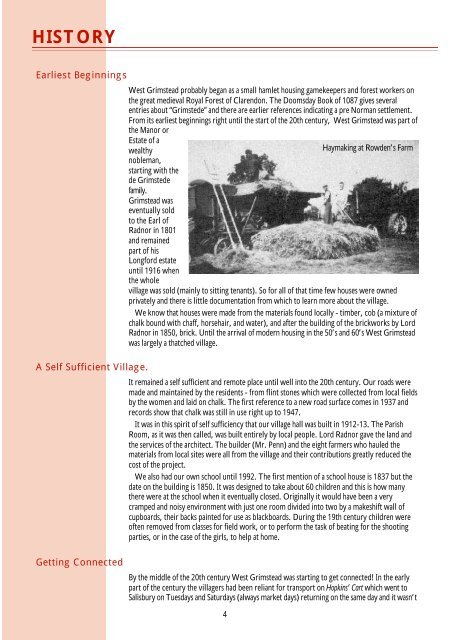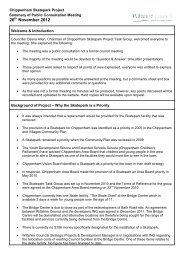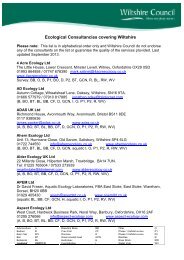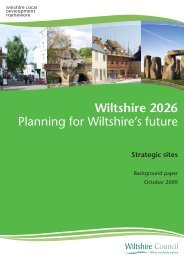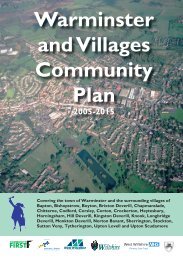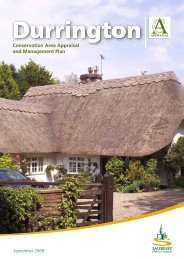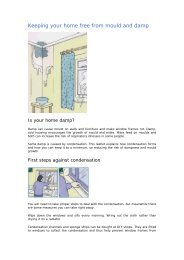(Adopted September 2005) 3mb - Wiltshire Council
(Adopted September 2005) 3mb - Wiltshire Council
(Adopted September 2005) 3mb - Wiltshire Council
- No tags were found...
You also want an ePaper? Increase the reach of your titles
YUMPU automatically turns print PDFs into web optimized ePapers that Google loves.
HISTORYEarliest BeginningsA Self Sufficient Village.West Grimstead probably began as a small hamlet housing gamekeepers and forest workers onthe great medieval Royal Forest of Clarendon. The Doomsday Book of 1087 gives severalentries about “Grimstede” and there are earlier references indicating a pre Norman settlement.From its earliest beginnings right until the start of the 20th century, West Grimstead was part ofthe Manor orEstate of awealthyHaymaking at Rowden’s Farmnobleman,starting with thede Grimstedefamily.Grimstead waseventually soldto the Earl ofRadnor in 1801and remainedpart of hisLongford estateuntil 1916 whenthe wholevillage was sold (mainly to sitting tenants). So for all of that time few houses were ownedprivately and there is little documentation from which to learn more about the village.We know that houses were made from the materials found locally - timber, cob (a mixture ofchalk bound with chaff, horsehair, and water), and after the building of the brickworks by LordRadnor in 1850, brick. Until the arrival of modern housing in the 50’s and 60’s West Grimsteadwas largely a thatched village.It remained a self sufficient and remote place until well into the 20th century. Our roads weremade and maintained by the residents - from flint stones which were collected from local fieldsby the women and laid on chalk. The first reference to a new road surface comes in 1937 andrecords show that chalk was still in use right up to 1947.It was in this spirit of self sufficiency that our village hall was built in 1912-13. The ParishRoom, as it was then called, was built entirely by local people. Lord Radnor gave the land andthe services of the architect. The builder (Mr. Penn) and the eight farmers who hauled thematerials from local sites were all from the village and their contributions greatly reduced thecost of the project.We also had our own school until 1992. The first mention of a school house is 1837 but thedate on the building is 1850. It was designed to take about 60 children and this is how manythere were at the school when it eventually closed. Originally it would have been a verycramped and noisy environment with just one room divided into two by a makeshift wall ofcupboards, their backs painted for use as blackboards. During the 19th century children wereoften removed from classes for field work, or to perform the task of beating for the shootingparties, or in the case of the girls, to help at home.Getting ConnectedBy the middle of the 20th century West Grimstead was starting to get connected! In the earlypart of the century the villagers had been reliant for transport on Hopkins’ Cart which went toSalisbury on Tuesdays and Saturdays (always market days) returning on the same day and it wasn’t4444


